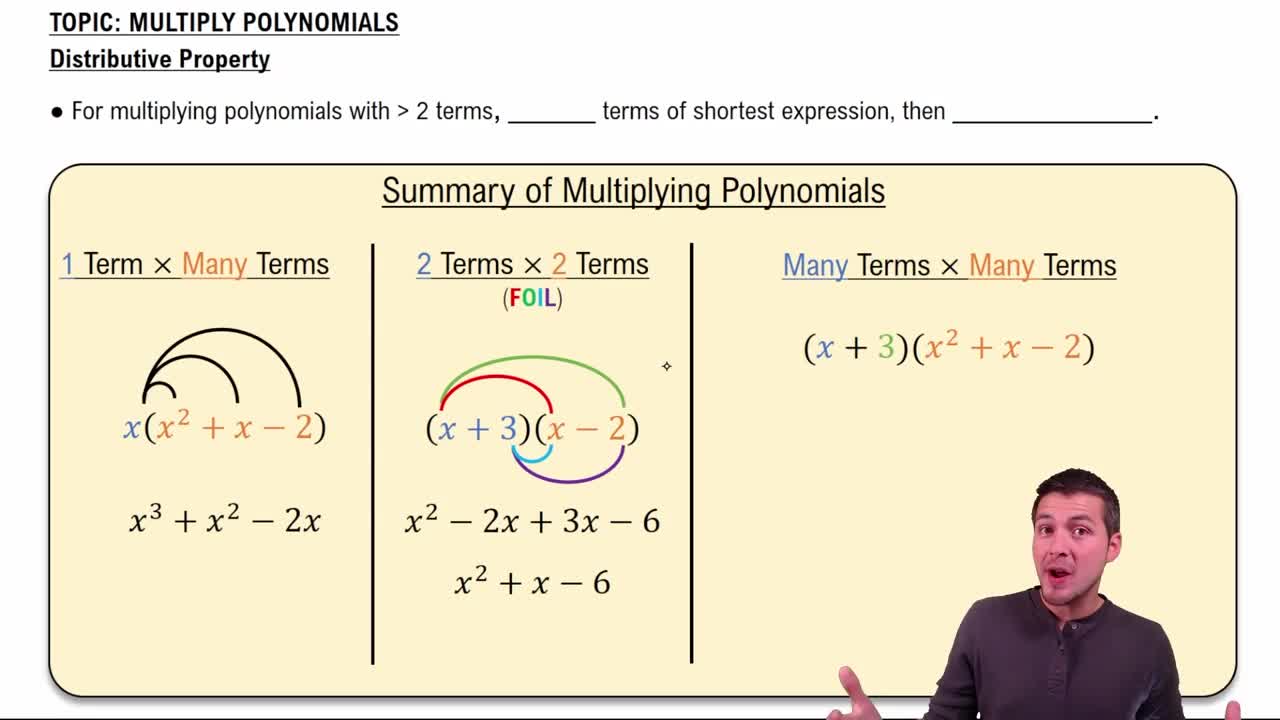Here are the essential concepts you must grasp in order to answer the question correctly.
Exponential Expressions
Exponential expressions involve a base raised to a power, indicating how many times the base is multiplied by itself. In the expression (−4/x)^3, the base is (−4/x) and the exponent is 3, meaning the base will be multiplied by itself three times. Understanding how to manipulate these expressions is crucial for simplification.
Recommended video:
Simplifying Exponential Expressions
Negative Exponents
Negative exponents indicate the reciprocal of the base raised to the absolute value of the exponent. For example, x^(-n) is equivalent to 1/(x^n). In the expression (−4/x)^3, recognizing that x in the denominator can be treated with a negative exponent will aid in simplifying the expression correctly.
Recommended video:
Distributive Property
The distributive property allows us to multiply a single term by each term within a parenthesis. When simplifying (−4/x)^3, applying the distributive property helps in expanding the expression to separate the base and the exponent, leading to clearer simplification steps. This property is essential for handling expressions with multiple components.
Recommended video:
Multiply Polynomials Using the Distributive Property
 Verified step by step guidance
Verified step by step guidance Verified Solution
Verified Solution

